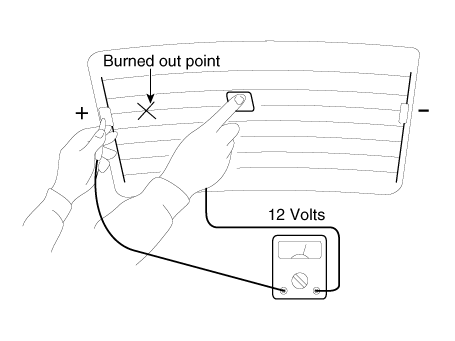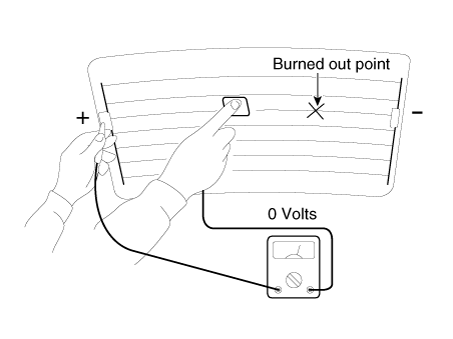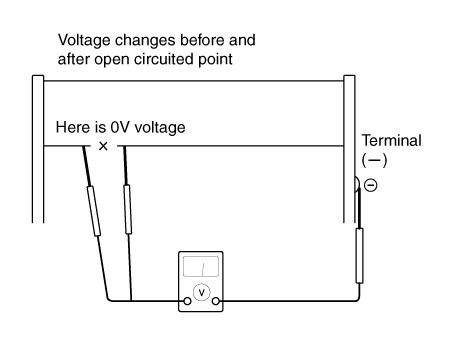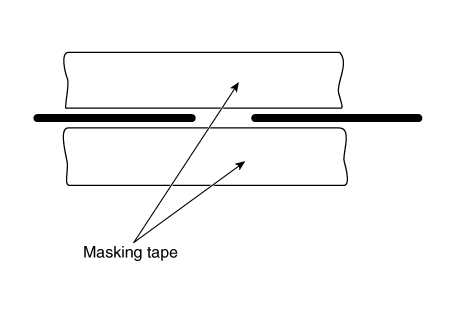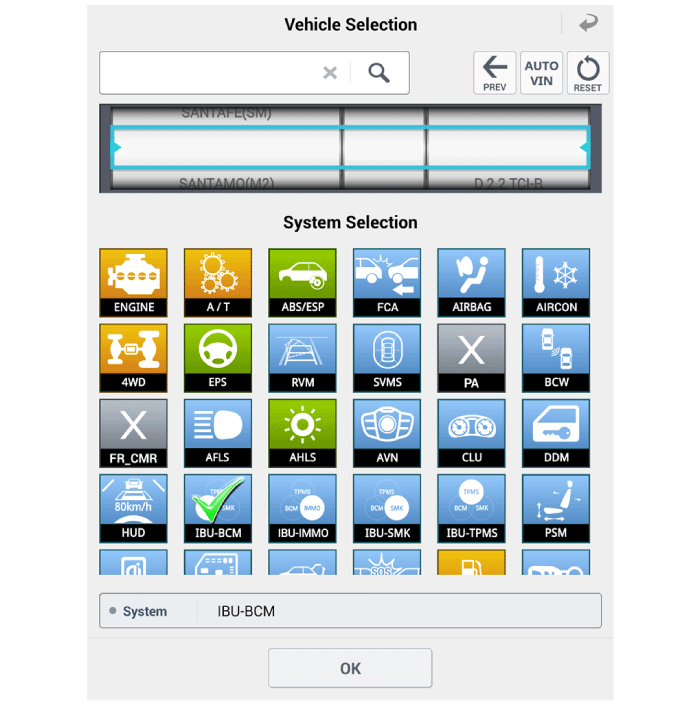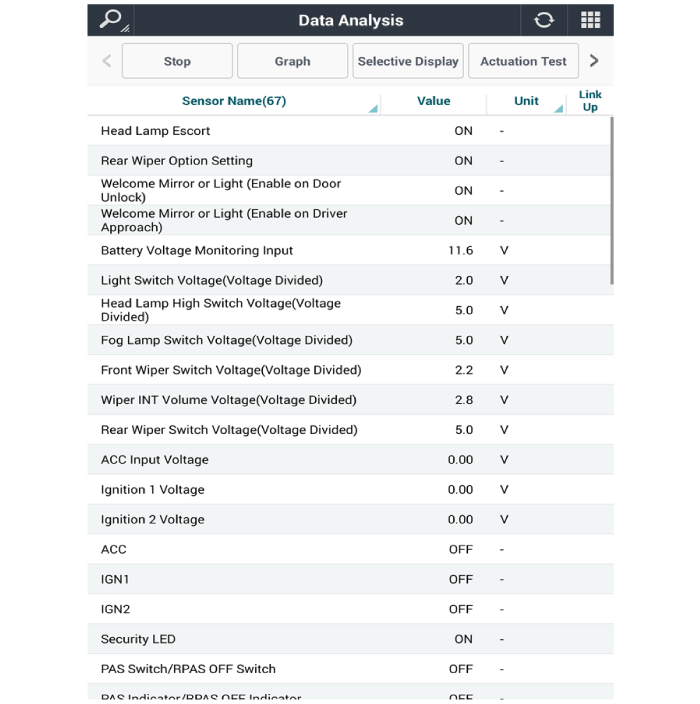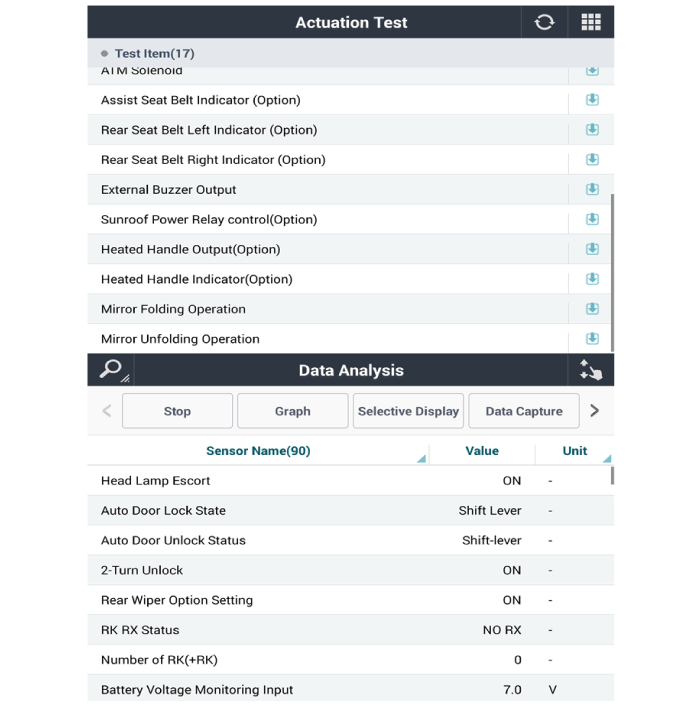 Hyundai Elantra CN7: Rear Glass Defogger
Hyundai Elantra CN7: Rear Glass Defogger
Components and components location
| Component Location |
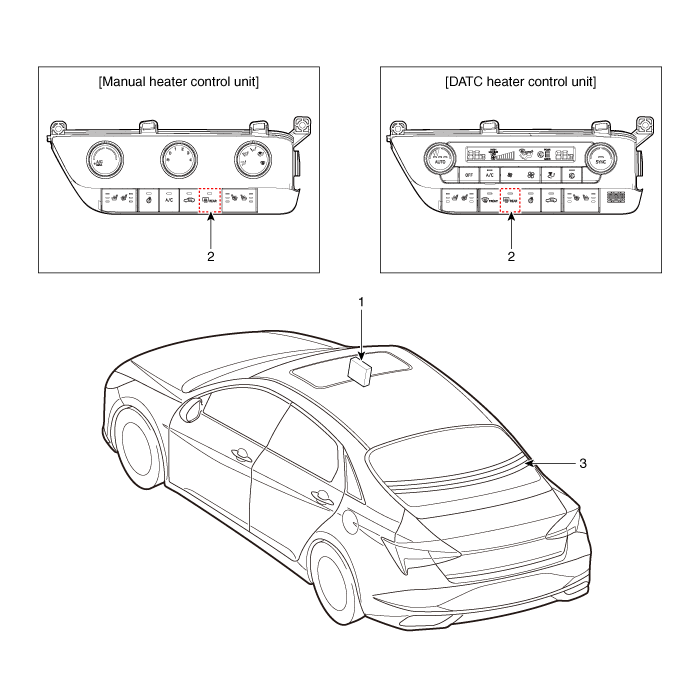
| 1. Integrated body control unit (IBU) 2. Rear glass defogger switch | 3. Rear glass defogger |
Rear Glass Defogger Printed Heater
Repair procedures
| Inspection |
|

| 1. | Turn on the defogger switch and use a voltmeter to measure the voltage of each heater line at the glass center point. If a voltage of approximately 6V is indicated by the voltmeter, the heater line of the rear window is considered satisfactory.
|
| 2. | If a heater line is burned out between the center point and (+) terminal, the voltmeter will indicate 12V.
|
| 3. | If a heater line is burned out between the center point and (-) terminal, the voltmeter will indicate 0V.
|
| 4. | To check for open circuits, slowly move the test lead in the direction that the open circuit seems to exist. Try to find a point where a voltage is generated or changes to 0V. The point where the voltage has changed is the open-circuit point.
|
| 5. | Use an ohmmeter to measure the resistance of each heater line between a terminal and the center of a grid line, and between the same terminal and the center of one adjacent heater line. The section with a broken heater line will have a resistance twice that in other sections. In the affected section, move the test lead to a position where the resistance sharply changes.
|
Repair of Broken Heater Line
Prepare the following items :
| 1. | Conductive paint. |
| 2. | Paint thinner. |
| 3. | Masking tape. |
| 4. | Silicone remover. |
| 5. | Using a thin brush : Wipe the glass adjacent to the broken heater line, clean with silicone remover and attach the masking tape as shown. Shake the conductive paint container well, and apply three coats with a brush at intervals of about 15 minutes apart. Remove the tape and allow sufficient time for drying before applying power. For a better finish, scrape away excess deposits with a knife after the paint has completely dried. (Allow 24 hours).
|
Rear Glass Defogger Switch
Repair procedures
| Diagnosis with Diagnostic tool |
Diagnosis with Diagnostic tool
| 1. | In the body electrical system, failure can be quickly diagnosed by using the vehicle diagnostic system (Diagnostic tool). The diagnostic system (Diagnostic tool) provides the following information.
|
| 2. | If diagnose the vehicle by Diagnostic tool, select "DTC Analysis" and "Vehicle".
|
| 3. | Select the 'Data Analysis' and 'Car model'.
|
| 4. | Select the 'IBU_BCM' to search the current state of the input/output data.
|
| 5. | To forcibly actuate the input value of the module to be checked, select option 'Actuation Test'.
|
| Removal |
| 1. | Disconnect the negative (-) battery terminal. |
| 2. | Remove the heater and A/C controll unit. (Refer to Heating, Ventilation, Air conditioning - "Heater & A/C Control Unit (Dual)") |
| Installation |
| 1. | Install the heater and A/C control unit. |
| 2. | Connect the negative (-) battery terminal. |



